ARGENTINA
Buenos Aires

Buenos Aires
Buenos Aires
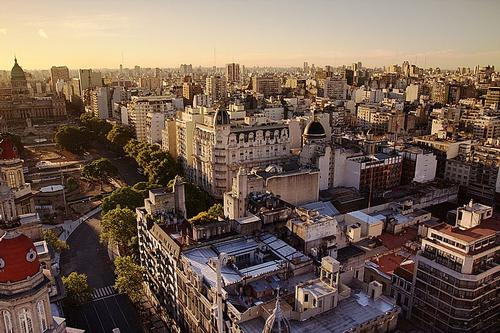 Buenos AiresPhoto: Luis Argerich CC 2.0 Generic no changes made
Buenos AiresPhoto: Luis Argerich CC 2.0 Generic no changes made
Buenos Aires is the capital and largest city in Argentina. Buenos Aires is also the 15th city by population size in the world. The name means "Clean air" in Spanish. The city is the center of industry and commerce in Argentina. Buenos Aires is one of the most economically important cities in Argentina and has a great cultural offer and is the starting point for trips to the rest. of the country. The inhabitants of Buenos Aires are called Porteños, "people of the port".
| advertisement |
| Hotels Buenos Aires |
Location
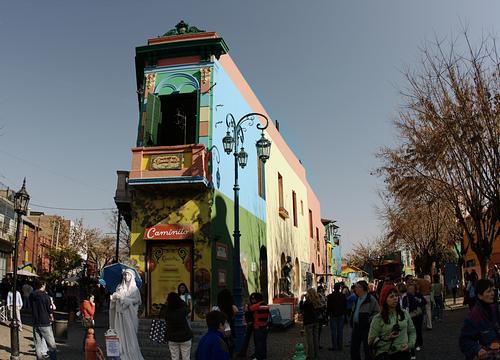 Buenos Aires La BocaPhoto: Luis Argerich CC 2.0 Generic no changes made
Buenos Aires La BocaPhoto: Luis Argerich CC 2.0 Generic no changes made
Buenos Aires is located on the southeastern coast of South America opposite Uruguay on the 100-mile wide River Plate. Buenos Aires has a total area of 203 square km. The city is divided into 48 districts or barrios. The Greater Buenos Aires (Gran Buenos Aires) metropolitan area is one of the most densely populated urban centers in the world with more than 15 million people. The coordinates of Buenos Aires are 34º 36 South latitude and 58º 26 West longitude.
Weather
Buenos Aires' weather can best be described as subtropical and it is often quite humid. Because Buenos Aires is located in the southern hemisphere, the seasons and the associated weather are reversed. The summer months fall between December and February and the winter runs from June to August. June and July have the coolest climate, the average daytime temperature remains around 15 °C or 16 °C. The nights can feel cold and you will often need a jacket during this time. In the summer months the weather is wonderful in Buenos Aires, also the spring and autumn are pleasant times to visit the city.
History
The city was founded in 1536 by a Spanish gold-seeking expedition under Pedro de Mendoza. Attacks by indigenous peoples forced the settlers to move to Asunción (now Paraguay's capital) in 1539 and the city was destroyed by fire in 1541. A second and more permanent settlement was founded in 1580 by Juan de Garay, who came from Asunción. Although Spain neglected Buenos Aires for a long time because it had more importance in the resources of Mexico and Peru, the settlement grew with the development of trade.
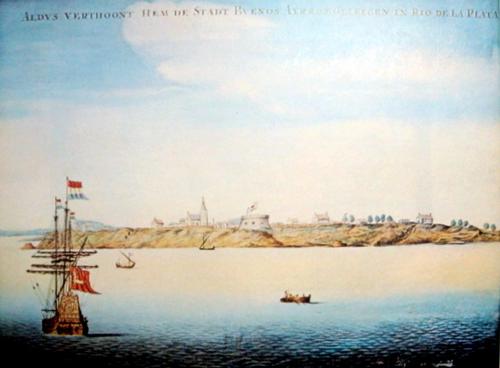 Buenos Aires in 1628Photo: Public Domain
Buenos Aires in 1628Photo: Public Domain
In 1617, the province of Buenos Aires, or Río de la Plata, was separated from the central authority of Asunción and given its own governor. A diocese was established in 1620. During the 17th century, the city had nothing to fear from indigenous peoples, but French, Portuguese and Danish attacks were frequent. Buenos Aires remained subordinate to the Spanish Viceroy in Peru until 1776, after which it became the capital of the newly created Viceroyalty of Río de la Plata, which comprised much of today's Argentina, Uruguay, Paraguay, and Bolivia.
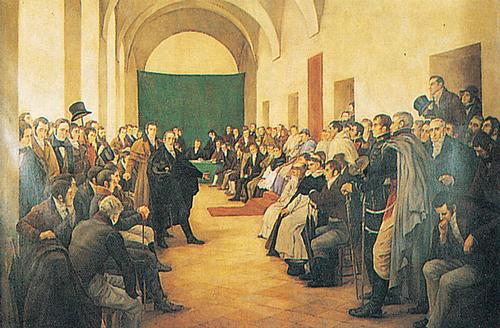 May revolution 1810 In Buenos AiresPhoto: Public Domain
May revolution 1810 In Buenos AiresPhoto: Public Domain
Prosperity increased due to the gradual abolition of the restrictions on trade, which previously had to run via Lima. Charles III of Spain created an open port in Buenos Aires, but this made the porteños increasingly long for secession from the Spanish Empire. In 1806, when Spain was allied with France during the Napoleonic Wars, British troops occupied Buenos Aires. Another British attack was repelled the following year. On May 25, 1810 (now the national holiday), armed citizens of the Cabildo successfully demanded the resignation of the Spanish viceroy and established a provisional representative government. This action sparked the Latin American revolt against Spanish rule.
The official independence of Argentina (July 9, 1816) was followed by a protracted conflict between the Unitarians and the federalists, mainly from the outer regions. The Unitarians were strongest in the Buenos Aires region. They advocated a centralized government dominated by the city of Buenos Aires. The federalists supported provincial autonomy and equality. In 1853, the city and province of Buenos Aires refused to participate in a constituent assembly and seceded from Argentina. National political unity was finally achieved when Bartolome Miter became President of Argentina in 1862 and proclaimed Buenos Aires its capital. The struggle between Buenos Aires and the province continued until 1880, when the city was detached from the province and federalized. A new city, La Plata, was built as the provincial capital.
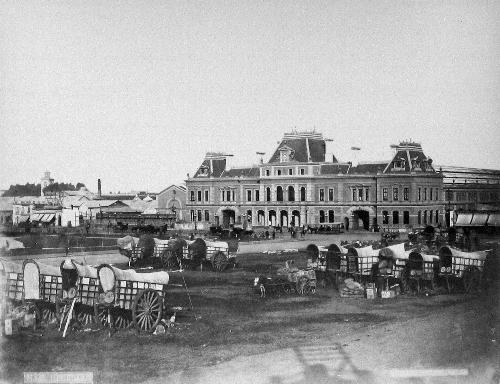 Plaza Constitución railway station of Buenos Aires in 1885Photo: Public Domain
Plaza Constitución railway station of Buenos Aires in 1885Photo: Public Domain
The Argentine railway company stimulated the development of the pampas in the second half of the 19th century. The pampas' products were marketed and exported in Buenos Aires. The spectacular economic development of the city led to an influx of immigrants from all over the world until the 1920s. Slums emerged in the 1950s. The development of the city's transportation system in the 1970s and 80s facilitated further economic growth. Buenos Aires is now a modern city.
Sights
Below are some of the sights of Buenos Aires that you must have seen.
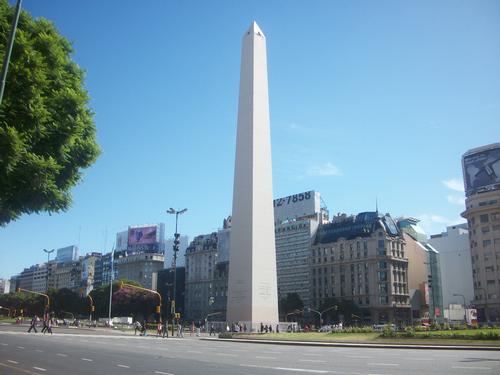 Buenos Aires ObeliskPhoto:Victoria Rachitzky CC 2.0 Generic no changes made
Buenos Aires ObeliskPhoto:Victoria Rachitzky CC 2.0 Generic no changes made
The Obelisk is Buenos Aires' famous landmark. It was established in May 1936 to commemorate the 400th anniversary of the founding of Buenos Aires. It is built on the spot where the Argentine flag was hoisted for the very first time. This towering structure is more than 67 meters high. There is only one entrance to this beautiful structure and there are four windows in the top of the tower, which can only be reached after climbing a staircase of 206 steps.
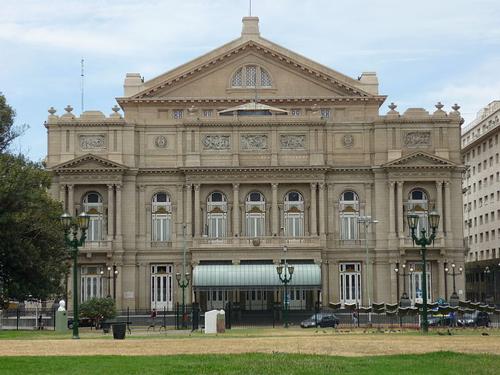 Colon Theater Buenos AiresPhoto: Pmt7ar CC 3.0 Unported no changes madee
Colon Theater Buenos AiresPhoto: Pmt7ar CC 3.0 Unported no changes madee
The Colón Theater is the second largest theater for the performing arts in the Southern Hemisphere after the Sydney Opera House. This theater was built in Italian Renaissance style about 100 years ago and it was designed by Italian architect Francisco Tamburri. You can take a tour of the theater and have a look at the main hall, which can accommodate nearly 2,500 visitors.
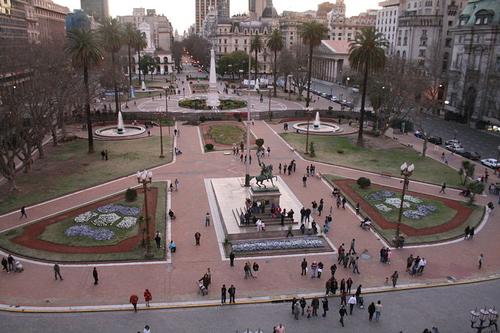 Plaza de Mayo Buenos AiresPhoto: Carlos Ravazzani CC 3.0 Unported no changes made
Plaza de Mayo Buenos AiresPhoto: Carlos Ravazzani CC 3.0 Unported no changes made
The plaza de Mayo is the city's main square and dates back to the late 16th century, when it was founded by Juan de Garay. This square is the center of Buenos Aires and there are a number of interesting buildings that are of historical importance. The Old Town Hall and Cathedral are perhaps the most famous structures. The square is also known for the foolish mothers who protest here against the disappearances under the military rule of 1976-1983.
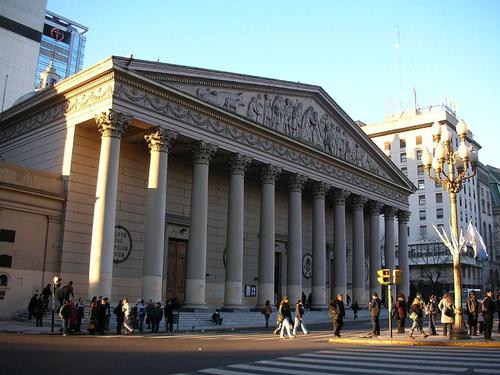 Cathedral Buenos AiresPhoto: Richie Diesterheft CC 2.0 Generic no changes made
Cathedral Buenos AiresPhoto: Richie Diesterheft CC 2.0 Generic no changes made
The Cathedral is a beautiful neo-classical Catholic church and best known for keeping the earthly remains of General José de San Martin, the national hero known for his role in liberating the land from the Spanish. The first stone of the church was laid in the 16th century and the current structure was completed in the mid-19th century. The 12 stone columns in the front give the impression of an ancient Greek temple.
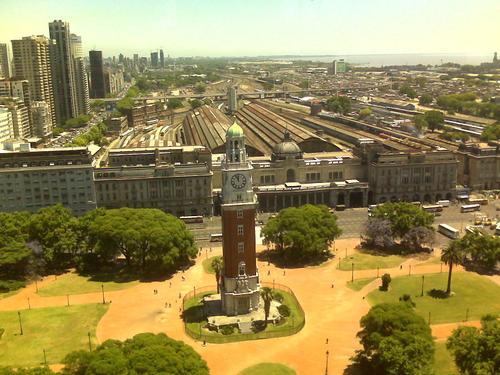 Torre Monumental Buenos AiresPhoto: Jorge Gobbi CC 2.0 Generic no changes made
Torre Monumental Buenos AiresPhoto: Jorge Gobbi CC 2.0 Generic no changes made
The Torre Monumental, also known as Torre de los Ingleses, was built for Buenos Aires by the British to commemorate the centenary of the May 1810 Revolution. The clock is built in an Elizabethan style and retains most of its original characteristics. Visitors can take the lift to the top of the tower where a beautiful view over the harbor area is certainly worthwhile.
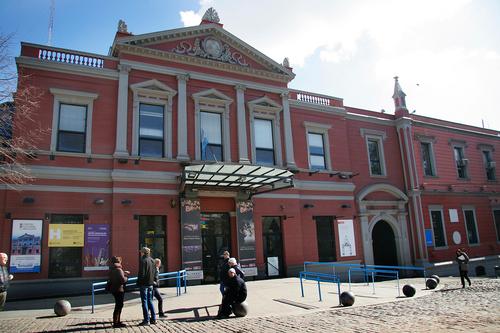 Centro Cultural Recoleta Buenos AiresPhoto: Gobierno de la Ciudad de Buenos Aires CC 2.0 no changes made
Centro Cultural Recoleta Buenos AiresPhoto: Gobierno de la Ciudad de Buenos Aires CC 2.0 no changes made
There are many interesting museums in Buenos Aires. Some provide a glimpse into local history and culture, some contemporary art, some science and technology. A few museums on the local history of Buenos Aires are Cabildo de Lujan, Centro Cultural Recoleta and Museo Historiographical Nationale. The Centro Cultural Recoleta was built in the year 1716 by the Franciscan monks. In 1978 it was converted into a museum, in which various artifacts show something of the culture and history of Buenos Aires.
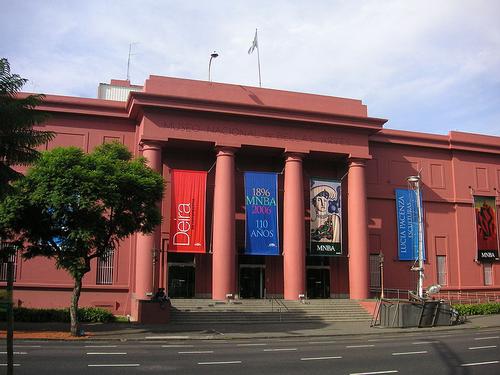 National Museum of Fine Arts Buenos AiresPhoto:Beatrice Murch CC BY-SA 2.0) no changes made
National Museum of Fine Arts Buenos AiresPhoto:Beatrice Murch CC BY-SA 2.0) no changes made
The National Museum of Fine Arts is known locally as the Museo Nacional de Bellas Artes. The museum is located in a building that originally served as a water company. It is home to Argentina's largest collection of Argentine paintings and sculptures. Paintings on display are mainly from the 19th and 20th centuries. In addition to works by domestic artists, there are pieces by Van Gogh, Monet, Renoir, Rodin and Toulouse-Lautrec, and other renowned artists.
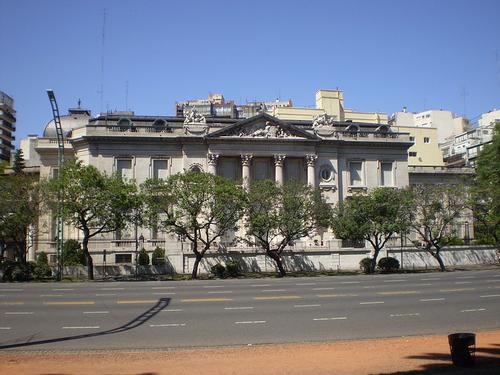 Museo Nacional de Arte Decorativo Buenos AiresPhoto: Roberto Fiadone in the public domain
Museo Nacional de Arte Decorativo Buenos AiresPhoto: Roberto Fiadone in the public domain
Visitors to the Museo Nacional de Arte Decorativo are enchanted by the architectural beauty of the building as well as by its artistic content. The grand building that houses this museum was designed by René Sergent, the French architect responsible for some of the city's most eye-catching mansions. The museum's collection consists of paintings, sculptures, ceramics and furniture. Other parts of the house are furnished with antiques, ceramics, paintings, sculptures and much more. The gardens are also worth a look.
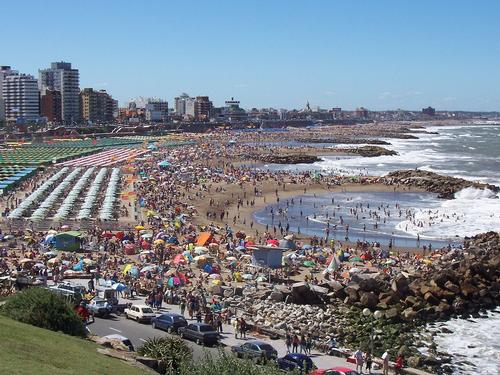 Buenos Aires Mar del PlataPhoto: Leandro Kibisz in the public domain
Buenos Aires Mar del PlataPhoto: Leandro Kibisz in the public domain
Some beautiful beaches on the Atlantic Ocean are located in the province of Buenos Aires. Several cities in the province of Buenos Aires are located on the coast. A number of those coastal cities have large virgin beaches. San Clemente del Tuya, Santa Teresita, Mar de Ajo and Mar del Plata combine natural tranquility and beauty with modern facilities and services. These beaches are the ideal place to spend a few hours and laze in the sun.
Buenos Aires' shopping opportunities are famous all over South America. Buenos Aires is known for its good quality leather goods. One of the popular shopping areas of Buenos Aires is Recoleta. This is one of the most expensive and trendy areas in Buenos Aires. A craft market is held here every weekend with free performances by street performers.
Tips
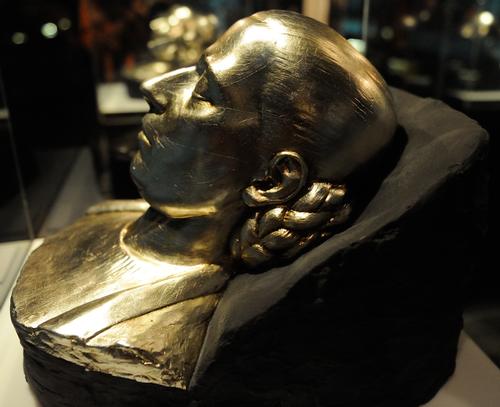 Buenos Aires Evita Museum Death MasquePhoto: Tim Adams CC 2.0 Generic no changes made
Buenos Aires Evita Museum Death MasquePhoto: Tim Adams CC 2.0 Generic no changes made
The life of Argentina's most famous woman is shown in the very popular Evita museum. Located in the same building once used by the Eva Peron Foundation in Buenos Aires, you can split the Museo Evita into different sections, each highlighting a different part of Evita Peron's life. Her clothes and her voting card are among the objects on display here. The story of Eva Duarte de Peron is familiar to many visitors, mainly thanks to Andrew Lloyd Webber's famous musical entitled 'Evita', and Madonna's role of Eva Perón in the 1996 film of the same name..
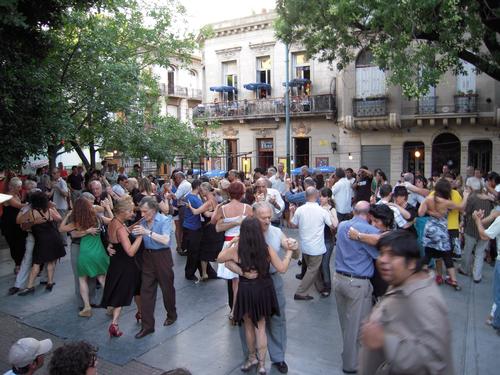 Buenos Aires TangoPhoto: Helge Høifødt CC 3.0 Unported no changes made
Buenos Aires TangoPhoto: Helge Høifødt CC 3.0 Unported no changes made
The popular dance form Tango is a gift from Argentina to the rest of the world. Tango is extremely popular in Buenos Aires and the city celebrates "Tango Day" on December 11 every year. Tango is culturally important in Buenos Aires. The striking form of music and dance is seductive, captivating and simply put, offers entertainment. You should not miss a Tango show when visiting the city where tango was born.
Useful links Buenos Aires
BBC Country ProfilesWorld Fact Book Explore all Countries
How to call
Last updated June 2025
Copyright: Team - The World of Info